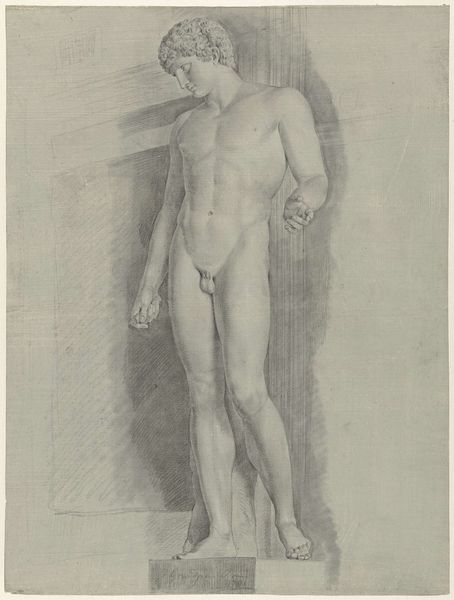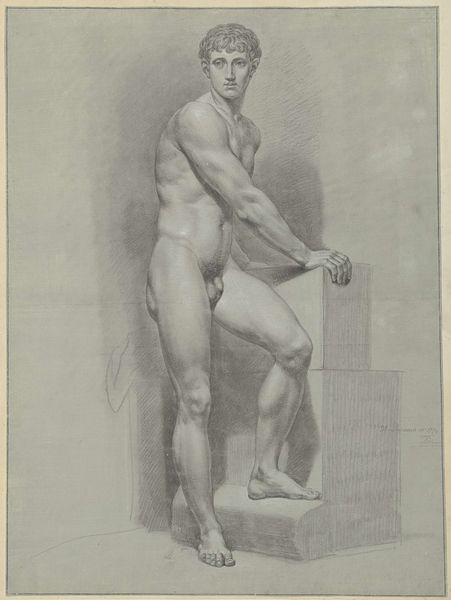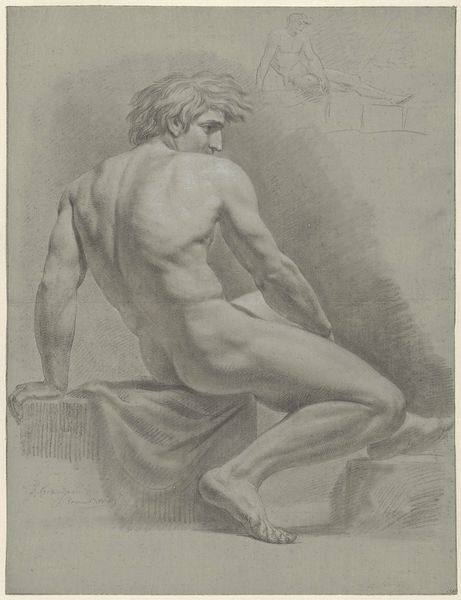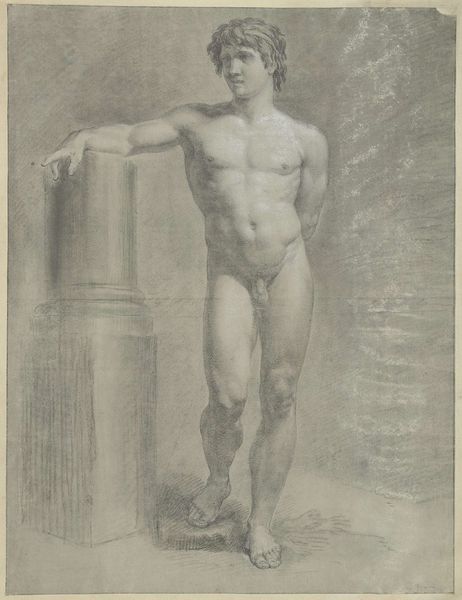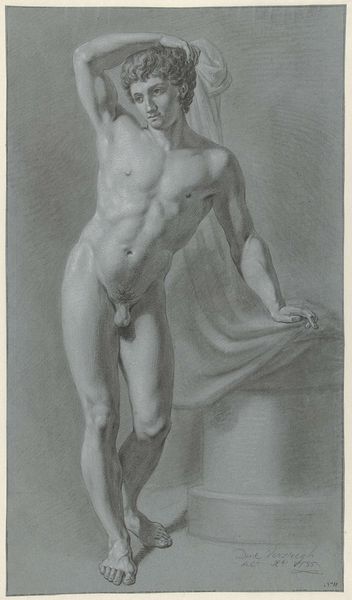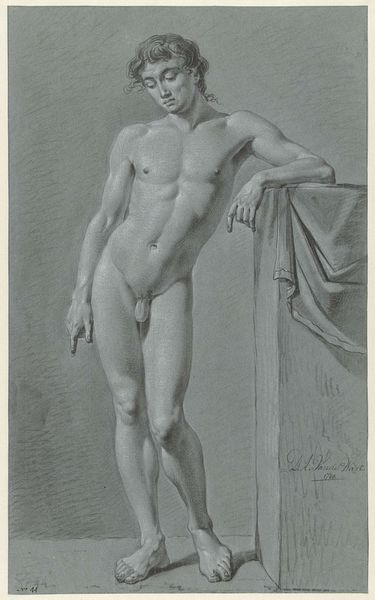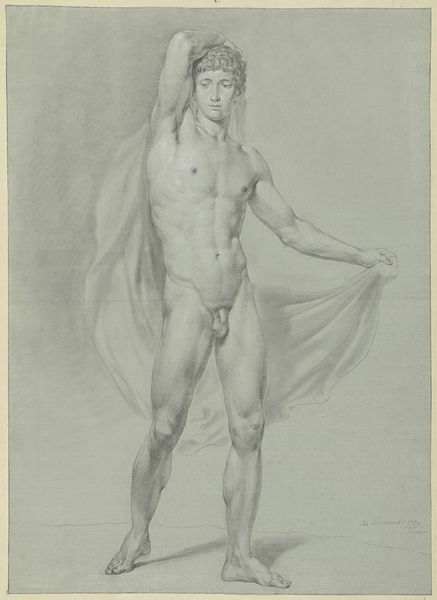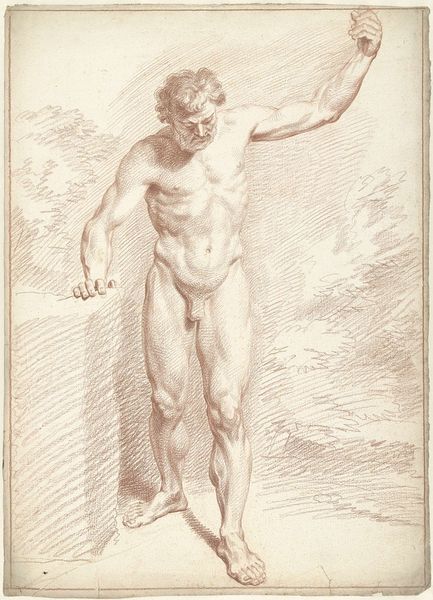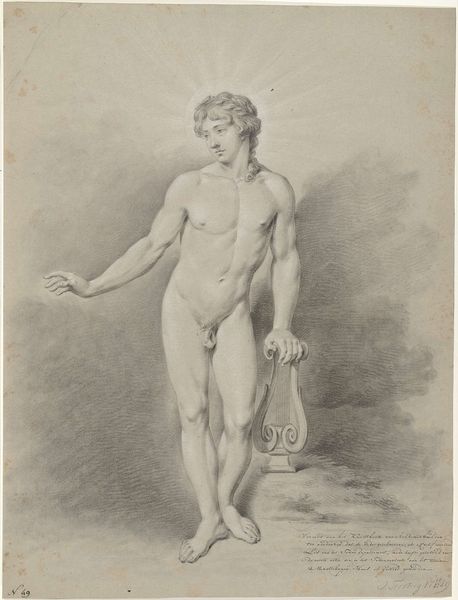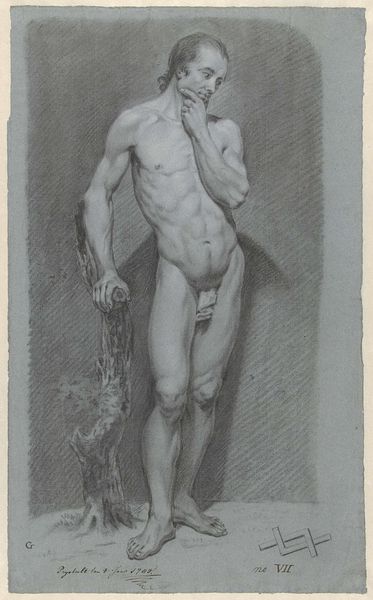
drawing, dry-media, pencil
#
portrait
#
pencil drawn
#
drawing
#
neoclacissism
#
pencil sketch
#
charcoal drawing
#
figuration
#
form
#
dry-media
#
pencil drawing
#
pencil
#
line
#
portrait drawing
#
academic-art
#
nude
Dimensions: height 511 mm, width 375 mm
Copyright: Rijks Museum: Open Domain
Jean Grandjean rendered this standing male nude with a cloth behind his back in the late 18th century. The figure's pose is rooted in classical antiquity, echoing the contrapposto stance favored by Greek sculptors, where weight is shifted to one leg, creating a balanced and dynamic form. The cloth draped behind him carries symbolic weight, reminiscent of ancient statues of gods and heroes. This motif has morphed over time, appearing in Renaissance paintings as a symbol of status or divinity, and in Baroque art to evoke drama and theatricality. Like a long thread, the cloth connects the past and the present. The emotional resonance of this image lies in its evocation of vulnerability and strength. The male nude has long been used to express ideals of beauty and heroism, but it also reveals the subject's humanity. The enduring appeal of this image resides in its capacity to speak to our collective memory. Its recurring reappearance reflects our ongoing fascination with the body and its symbolic potential.
Comments
No comments
Be the first to comment and join the conversation on the ultimate creative platform.

